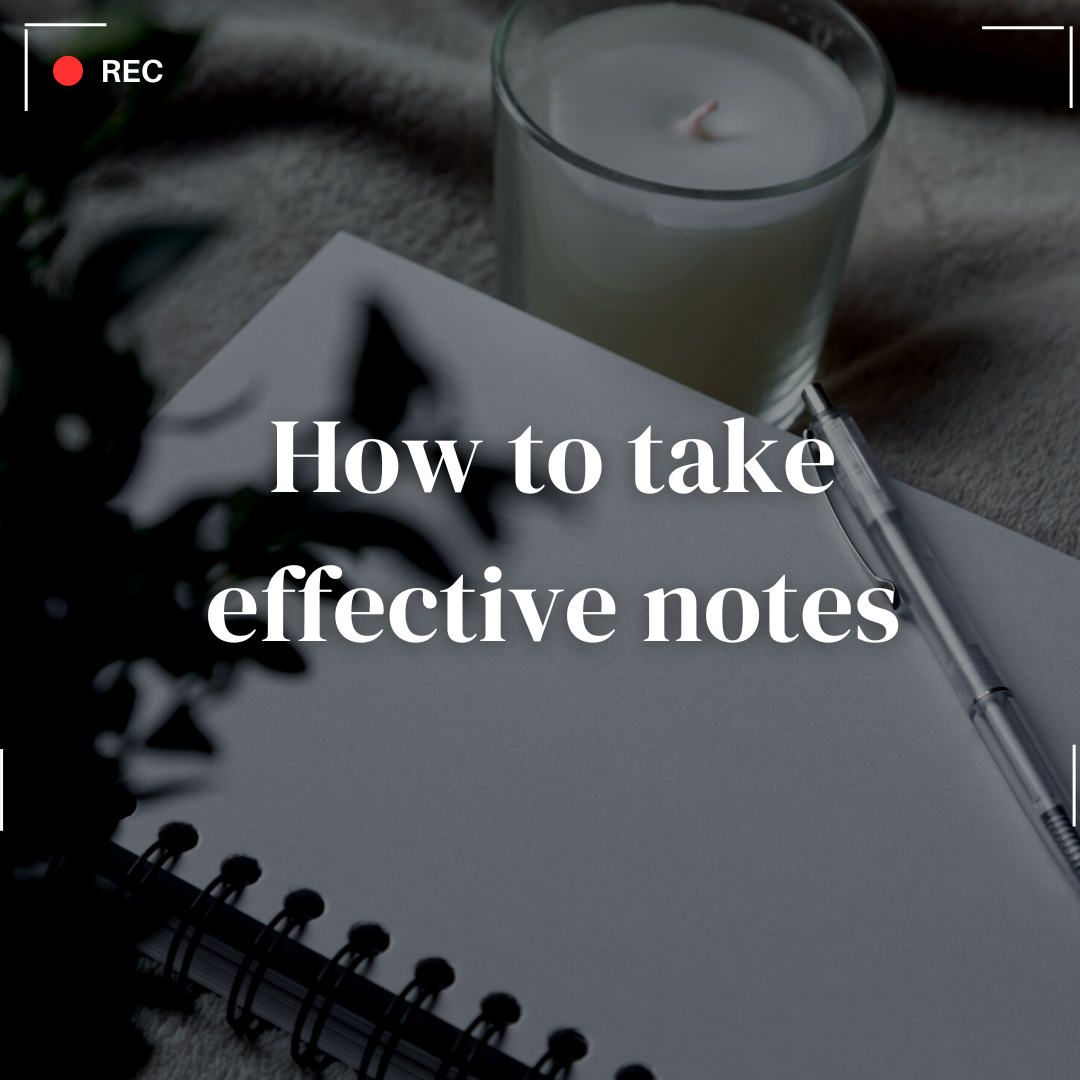Reflection Questions
What is the learning purpose of your video?
The purpose of my video is to teach students effective note-taking methods. I decided to create my video on this topic because when it comes to academic success, notes are a crucial part of understanding and studying class material. Some students may not know how to take notes or are not taught strategies to create effective notes, so they may still struggle. To address this, I created a video that goes through three note-taking methods: The Cornell Method, The Box Method and The Charting Method. The goal of the video is to give students a better understanding of how they can improve their notes and also give them the opportunity to experiment with other note-taking methods.
Which of the principles we’ve covered this term (e.g., Mayer/Universal Design for Learning/Cognitive Load Theory) did you incorporate into your design and why?
The Dual Coding Theory proposes that material is processed more effectively by combining visual and verbal stimuli. Throughout the video, I visually showed my computer screen to show the three types of note-taking methods while also using a voice-over. I also wanted to reduce Extraneous Cognitive Load to avoid any distractions from the learner by using the Signalling Principle and Contiguity Principle. The signalling principle suggests adding text-based cues, picture-based cues or vocal cues to direct the learner to the correct elements. One way I used text-based cues and vocal cues was when I showed the layout template for each of the note-taking methods. I created a layout template on Canva and added texts and arrows to different parts of the layout and explained where to look in the video when explaining each section of the layout. While also explaining the layout template, I ensured the use of the Contiguity Principle where words and pictures are kept close. I kept each section of the layout close to its corresponding text and arrow to make it easier to direct the learner’s attention. In managing intrinsic cognitive load, I used the segmenting principle where breaking complex ideas into smaller steps is effective in making learning much easier. I created the video in three ‘chunks’ by having different parts of the video focused on one note-taking method and then segmenting each part into 3 manageable steps: (1) the introduction, why the note-taking method is important (2) the layout template (3) tutorial. Each step was created to ensure each learner is supported by using a combination of audio, text, and visual images.
What was challenging about capturing your own video?
The most challenging part of my video was planning it beforehand, recording the video, layout template, music, and script. These parts were the most time-consuming since I had to record enough videos for the three note-taking methods to match the voice-over and also had to ensure the layout template was easy to follow. I also found it difficult to record the voice-over and found myself making mistakes and having to press record again.
What did you find easiest?
The creation of the video became easier once I had all the planned parts completed since all I had to do was combine them. The video editing software I used was iMovie, which I am familiar with using from previous courses. However, I wanted to challenge my video editing skills by using different video transitions and audio effects that I had not used before. I watched YouTube tutorials to incorporate these effects, as well, as created on-screen text images when introducing a new note-taking method, which I created on Canva. The combination of using both iMovie and Canva made it much easier to get my ideas across and I found it the most effective for learning. I also found recording the video the easiest because I used a phone tripod to keep the video steady and focused.
How would you approach capturing video differently next time?
Next time, I would show more videos of me talking because some learners might find it easier to visually learn rather than only using the voice-over and my computer. I would also use a better microphone because I found my voice too quiet once I moved it over to the iMovie editing software. Luckily, the software allowed me to turn up the volume, however, it was a bit time-consuming to make these extra edits.

lizcheng 2023-11-04
Hi @natalyr, This is a cool and useful learning video, I’m sure students will greatly benefit from learning how to effectively take down notes by using the methods you described in your video. Good use of the segmenting principle for each method. I love the intro and sound effects as the caption of each method is displayed on the screen. At first, I had a hard time looking at the demo, however, you zoomed in on some parts and that gave us a clear view of how you switched from the article that you were reading and transferring the notes to the other file. You also made sure that each method is understood by explaining and demonstrating each of them and providing a visual image of what each of the methods looks like.